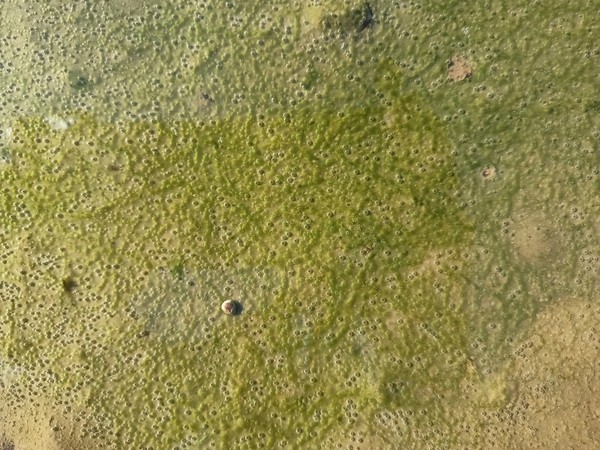Scientists from the UP Faculty of Science (FS UP), together with colleagues from the Royal Swedish Academy of Sciences in Stockholm, the Natural History Museum in London, and the University of North Florida in Jacksonville, have succeeded in using DNA analysis to describe the factors leading to the emergence of Microcoleus species and cyanobacteria adaptation to environmental conditions. According to the results of their joint research, these ancient cyanobacteria already inhabited the Earth some 30 million years ago. The six-year research by the international team of scientists has resulted in two publications in the prestigious scientific journals Nature Communications and iScience.
Scientists have been studying the development of species and the evolution of the cyanobacterium Microcoleus on the global scale. They have focused their attention on cyanobacteria that inhabit terrestrial habitats. Although Microcoleus cyanobacteria are microscopic, their colonies are of considerable size to the extent that they are commonly visible in nature. They are seen as green coatings on the soil in every garden, and form the typical green layers on puddles that can be found after rain on every dirt road. “In deserts, they cover entire square kilometres in the form of soil crusts,” said Petr Dvořák from the UP FS Department of Botany.
Scientists examined samples of cyanobacteria from Olomouc, the nearby Jeseníky Mountains, Greece, Scandinavia, Antarctica, Svalbard, deserts in the United States, and from the dry high mountain valleys of the Himalayas. They gradually obtained individual strains of Microcoleus from the samples in the laboratory, exhaustively mapping its nearly 300 genomes. Among the samples examined were dry herbarium examples of cyanobacteria up to 200 years-old. “We have been analysing this gigantic dataset for more than two years, which has led to some ground‑breaking findings. We dated the origin of the entire Microcoleus group of cyanobacteria to around 30 million years ago, with twelve species in total, making it is a very ancient group. Much older than humans,” said Dvořák.
Scientists then sought to describe what factors led to the emergence of these cyanobacteria species. This issue has fascinated biologists since the time of Darwin, who was the first to provide a coherent idea of the mechanism of the evolutionary process. “However, microorganisms, including cyanobacteria, have long been neglected. Mainly because it is necessary to get to the level of the DNA sequence. Our analyses have shown that the origin of species in our cyanobacteria was influenced by the geographical separation of populations, although all microorganisms were previously assumed to be able to spread unrestrictedly,” Dvořák described.
According to him, it is also interesting to find out how the emergence of soil cyanobacteria species was influenced by the conditions in which they occur. Soil cyanobacteria have to cope not only with drought in the deserts, but also with the intense UV radiation they face in Antarctica. “Using several methods, we have identified more than two dozen genes and several sequences of the genome by which the cyanobacteria have been able to adapt to these very inhospitable conditions and have therefore played an important role in the evolution of this group,” he pointed out.
Experts were also interested in the role of gene flow on the evolution of the cyanobacterial genome. This is because a reduction in gene flow between populations leads to separation and genetic diversification, and thus the emergence of species. “However, cyanobacteria are bacteria and they reproduce only clonally. It was therefore assumed that gene flow played no role in its evolution. Nevertheless, we observed different levels of gene flow in cyanobacterial species, ranging from intense gene flow to complete separation of species, where gene flow does not occur. This is the first speciation continuum to be observed in microorganisms,” said Dvořák.
Microcoleus has tapering fibres similar to plant roots. The fibres move and often burrow into the soil. “We noticed that the shape and length of the constriction varies between species. Some ends are thinner and others are more robust,” said Dvořák. The fibres are topped with a protective cap. Scientists have long speculated that the tip shape has an adaptive function, but no one had tested the hypothesis. “We investigated the relationship between the shape of the tip and various environmental factors – the amount of precipitation, light levels, and soil particle size composition. It turned out that all these variables have an influence on species diversification and therefore played a role in the evolution of our cyanobacteria,” said Dvořák.
The research was conducted at the Department of Botany under Petr Dvořák by doctoral students Aleksandar Stanojković (now a graduate) and Svatopluk Skoupý in the main role. Students of Bachelor’s and Maste;sr study programmes at UP FS also participated in the research. The research was supported by the Czech Science Foundation (grants 19‑12994Y and 23-06507S).
Blog: https://communities.springernature.com/posts/the-speciation-continuum-below-your-feet
